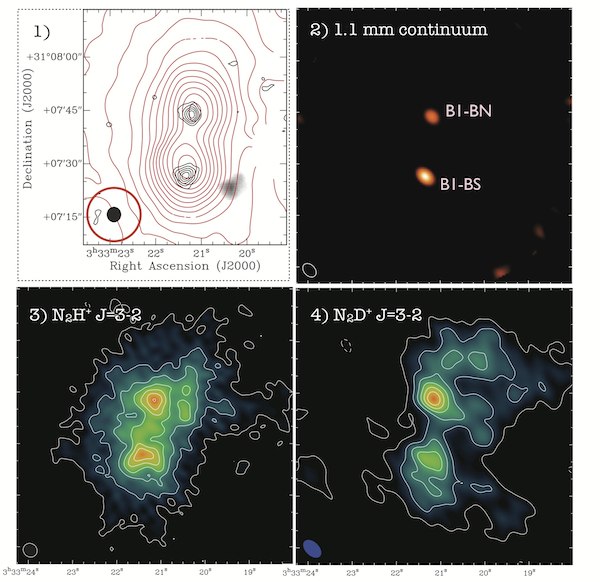|
Home \ Science \ Scientific Highlights
Scientific Highlights with the SMAProbing the Earliest Stage of Protostellar Evolution -- Barnard 1-bN and Barnard 1-bSYun-Hsin Huang (ASIAA/NTU) and Naomi Hirano (ASIAA) have studied two very young sources in the Barnard 1b (B1-b) core using the Submillimeter Array (SMA) in Hawaii and the Submillimeter Telescope (SMT) in Arizona. Two sources, labeled as B1-bN and B1-bS, are not seen in the Spitzer 24 μm image (Fig. 1; grey scale), indicating that they are very cold sources,which can be seen in the wavelengths longer than far-infrared. The 1.1 mm continuum map obtained with the SMA (Fig. 2) reveals that each of them contains a spatially compact component. This implies that both of them have already formed central objects. Two sources are also seen in the N2H+ and N2D+ J=3-2 maps (Fig. 3 and Fig. 4). The N2D+/N2H+ ratios at the positions of B1-bN and B1-bS are found to be extremely high, ~ 0.2, which is 4 orders of magnitude larger than the D/H ratio of 10-5 in the interstellar space. The high N2D+/N2H+ are also typical in the protostars in the very early evolutionary stage. Combined with the properties of low temperatures ( < 20 K) and low intrinsic luminosities (Lint < 0.01 L⊙), the two sources are the promising candidates for the first hydrostatic cores, which are considered to be formed at the beginning of the star formation process.
|
>> INTERNAL DOCU | ASIAA




